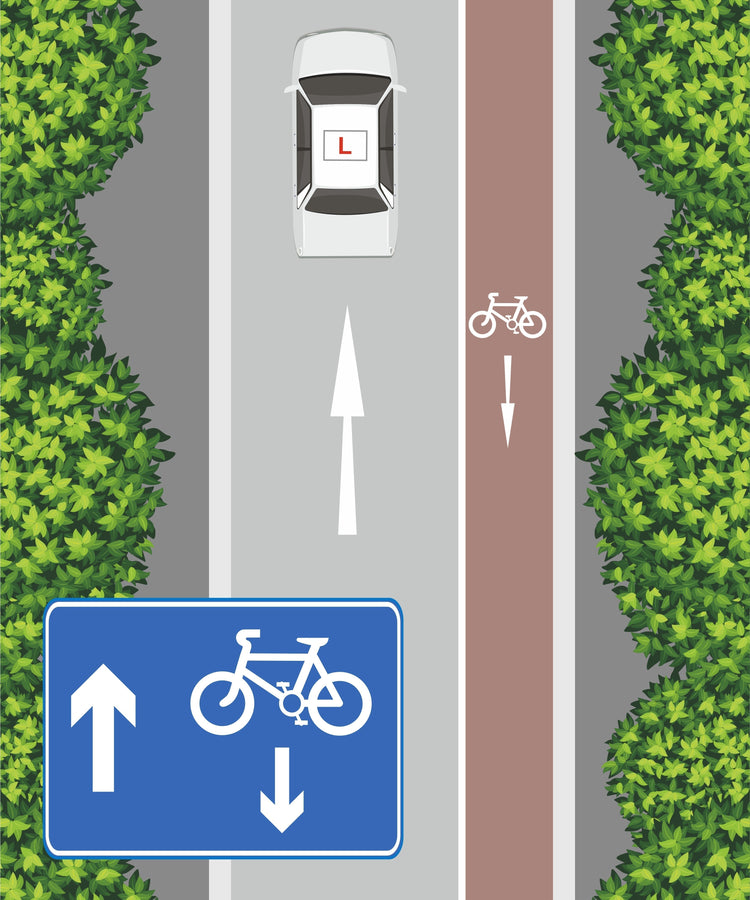What is a contraflow Cycle Lane?
A contraflow cycle lane is a designated lane that allows cyclists to travel in the opposite direction to motor traffic on a one-way street.
While cars, vans, and other vehicles must obey the one-way restriction, the contraflow cycle lane is clearly marked to show that bicycles are legally permitted to ride against the flow
Identifying a contraflow Cycle Lane
These lanes are usually separated by road markings, bollards, or sometimes a kerb, helping to give cyclists a safer and more direct route through areas where one-way systems might otherwise make journeys longer and less convenient.
Contraflow Cycle Lane Purpose
The main purpose of contraflow cycle lanes is to improve accessibility for cyclists, making cycling a quicker and more attractive option. Without them, cyclists would often be forced to take lengthy detours around town centres, housing estates, or business districts. By allowing travel in both directions, contraflow lanes encourage more people to choose cycling as a practical mode of transport, reduce congestion, and help create safer, calmer streets by integrating cycles more naturally into urban layouts.
Contraflow Cycle Lane
From a driver’s point of view, it’s essential to be alert when using roads with a contraflow cycle lane. Motorists may not instinctively expect traffic approaching from the “wrong” direction, so extra care is needed at junctions, driveways, and crossings.
Contraflow Cycle Lane Responsibilities
Road markings and signs make the system clear, but it remains a shared responsibility: drivers must give space and priority where required, while cyclists should remain visible and predictable in their movements. Used correctly, contraflow cycle lanes provide a balanced solution for modern traffic needs, respecting both traditional road layouts and today’s push for sustainable transport.
Contact Us
Please fill out the form below and we’ll get back to you within 24 hours.


